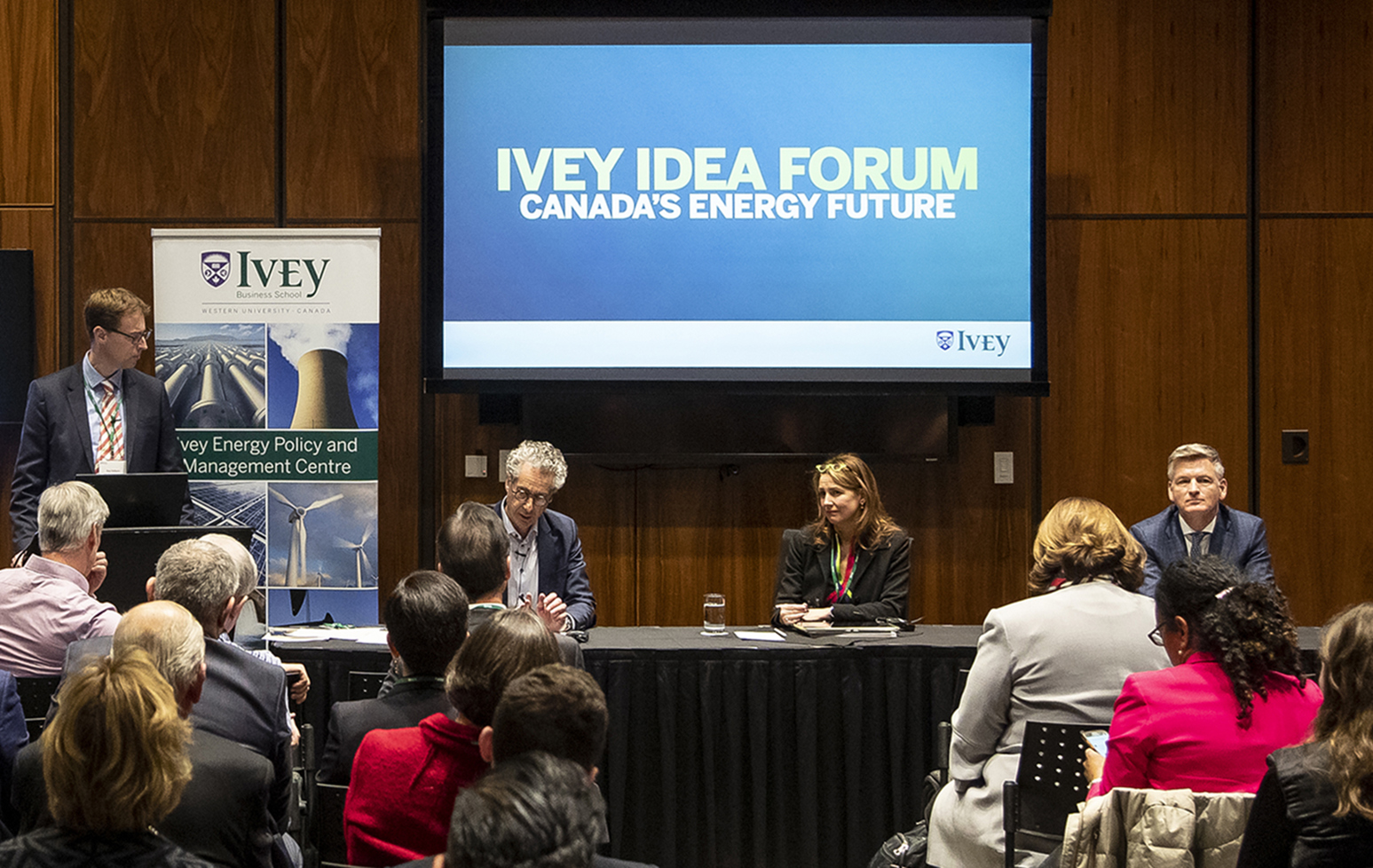The reality of climate change is creating wide-ranging pressures globally to reduce greenhouse gas emissions and transition to new energy technologies. Case in point: the Government of Canada is currently developing a plan to set the country on a path to achieve a prosperous net-zero emissions future by 2050.
What do these pressures mean for Canada’s energy future? Peter Tertzakian, Executive Director of ARC Energy Research Institute and one of Canada’s leading thinkers, writers, and speakers on issues vital to the future of energy, says Canadians are starting to recognize that the imperative is reduced emissions; it is not to put an industry out of business.
“There are no environmental groups, there are no pundits, that say that oil will be completely gone anytime soon, at least by 2040 and beyond,” he said. “The bigger question in my mind is, who should be the lean, mean, clean producers of oil going forward? Many people, including me, are starting to argue that it should be Canada, and we should be in the game as long as we are lean and clean going forward.”
Tertzakian was the keynote speaker for an Ivey Idea Forum in Toronto on January 8 called Canada’s Energy Future. Presented by the Ivey Energy Policy and Management Centre and moderated by Energy Centre Director Guy Holburn, the event also included a panel discussion with Lisa DeMarco, Senior Partner, DeMarco Allan LLP, and Michael Kelly, Executive Vice President and General Counsel, OMERS.
Related to this story
Disruption, denial, and transition
Tertzakian took a look back at history to show how every energy transition – whether it was from wind-fired clipper ships to coal-fired steamships, bio-fueled horse transport to petroleum-fueled vehicles, or today’s global shift from conventional vehicles to electric cars – follows the same pattern: disruption, denial, and eventually transition.
“The first phase is some sense of disruption in an industry, followed by denial amongst the participants. And then, once denial is reconciled, then you actually do the transition,” he said.
Despite the push to decarbonize, Tertzakian said global emissions continue to go up. Why? Technology itself is not enough for transition, it’s just one of numerous forces of change, such as environment, policy, social forces, geopolitics, economy and business.
“There’s a lot of denial out there, which is actually inhibiting our ability to transition,” he said.
“We went from Blockbuster to Netflix so we thought, oh it’s easy, it’s all about technology, technology is a sufficient catalyst on its own to make the change. But it’s not. In energy transitions, you need the right cocktail – I call it the transitioner – the right policy, the right social environment, the right technology, and the right capital. Each transition – whether it’s candle to light bulb, or horse to buggy, or horse to car – has its own dynamics.”
Behavioural change drives action on climate change
Particularly on the consumer front, people have to be prepared to change their behaviour.
“The business of energy is everybody’s business. Every decision that an individual makes is consequential – the car you buy, or the switch you flip. We all have to be part of the solution,” he said.
DeMarco also warned that such a transition is not without hurdles.
“I think we can predict that the transition we are going through isn’t going to be neat and tidy and we can certainly see a few very large transitions that might be exacerbated by inefficiencies,” she said.
And from a business perspective, Kelly said firms should be working to develop strong environmental, social, and governance practices to both survive the transition and improve their bottom line.
“Companies with sound environmental, social, and governance practices will perform better, particularly over the long run,” he said. “The long term is here today. It’s not something to worry about in five years.”



